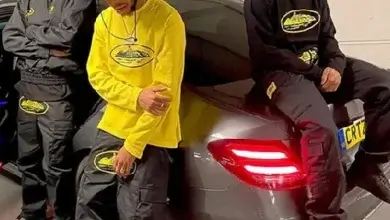Complete Guide to Backlink Indexing in 2025

TL;DR: Backlink indexing is critical for SEO success—unindexed backlinks provide zero ranking value. The top-ranking page on Google has 3.8x more backlinks indexed than positions 2-10. This complete guide covers free methods (Google Search Console, social signals, internal linking) and paid solutions (indexing services) to ensure your backlinks deliver maximum SEO impact in 2025.
Why Backlink Indexing Matters More Than Ever
You can build the best links in the world. You can get a DR90 contextual backlink sitting pretty in the intro of a page with 40,000 visitors a month… But if it’s not indexed? Google doesn’t care!
No crawl = no link juice = no ranking boost.
The Harsh Reality:
- 70-80% of backlinks never get indexed naturally
- Unindexed backlinks = $0 SEO value
- Indexed backlinks contribute 20-30% more SEO value
- Google takes days to weeks to crawl and index organically
Why This Guide Exists:
Backlinks play a crucial role in improving your website’s authority and search engine rankings. But obtaining backlinks alone isn’t enough, it’s also crucial to make sure search engines index them. That’s where efficient backlink indexing comes in—it’s a key factor to increase the effectiveness of your SEO efforts.
What is Backlink Indexing?
Backlink indexing is the process when Google’s bots discover websites, crawl them, check out the value of their content, and store them in their own databases. This allows verified content to appear in Google’s search results, making it accessible to users all around the web.
The Complete Process:
Step 1: Discovery
- Googlebot finds the page containing your backlink
- Through sitemaps, internal links, or external references
Step 2: Crawling
- Search engine bots visit the page
- Follow links and analyze content
- Extract information about outbound links
Step 3: Processing
- Bots analyze the linking page content
- Evaluate link quality, context, and relevance
- Determine if the link provides user value
Step 4: Indexing
- Backlink added to Google’s database
- Link becomes eligible to pass authority
- Contributes to your site’s ranking signals
Step 5: Ranking Impact
- Indexed backlink passes “link juice”
- Boosts domain authority
- Influences search rankings
What Makes a Backlink “Indexed”?
A backlink is considered indexed when: ✅ Google has crawled the page containing the link
✅ The link is stored in Google’s database
✅ The link is eligible to pass SEO value
✅ You can verify it through indexing checks
Why Your Backlinks Aren’t Indexing
Understanding the problem is the first step to solving it. Here are the real reasons most backlinks don’t get indexed:
1. Low Crawl Budget / Low Crawl Frequency
The Problem: Websites that aren’t crawled frequently by search engines may cause delays in backlink indexing. If the linking site has a low crawl rate, it could take weeks or even months for the backlink to be discovered.
Google’s John Mueller: Crawl frequency is influenced by factors such as website freshness and the importance of the content.
Why It Happens:
- Low domain authority sites
- Infrequently updated content
- Poor site architecture
- Limited internal linking
2. Poor Quality Linking Pages
The Problem: The content is garbage, spun, AI slop, or thin and the domain has overpublished for it’s size.
Signs of Low-Quality Pages:
- Thin content (< 600 words)
- AI-generated without human review
- Spun or duplicate content
- No organic traffic
- Excessive outbound links (40+)
- Spammy link patterns
3. Technical Indexing Barriers
Common Technical Issues:
Noindex Tags:
<meta name=”robots” content=”noindex”>
Explicitly tells Google not to index the page
Robots.txt Blocking:
User-agent: *
Disallow: /blog/
Prevents crawling of entire sections
JavaScript Hidden Links:
- Links rendered only through JavaScript
- Not accessible to crawlers
- Modern Googlebot handles JS better, but still problematic
Broken or Redirected Links:
- 404 errors on linking pages
- Redirect chains (301 > 301 > 200)
- Temporary redirects (302) instead of permanent (301)
4. Weak Internal Linking Structure
The Problem: The site has weak internal linking (Googlebot never finds the page).
Orphan Page Syndrome:
- Page isn’t linked from anywhere on the site
- Only accessible through direct URL
- Google may crawl but deprioritize indexing
- No internal authority flow
5. Spam Signals
The Problem: Sites with a history of spammy link-building practices are often flagged by search engines, which may delay or ignore the indexing of new backlinks. A recent study from Moz highlights that sites with a higher spam score are more likely to have their backlinks devalued or not indexed at all.
Red Flags:
- Sudden link velocity spikes
- Links from known link farms
- Irrelevant anchor text
- Unnatural link patterns
- Multiple links from same C-class IPs
6. Low Page Value Signals
Google’s Perspective: Google prioritizes high value URLs for crawling. So your $5 guest post on a DR18 blog with one paragraph of content, 29 other similar articles published the same day and 40 OBL?
Low-Value Indicators:
- No organic traffic to linking page
- Low engagement metrics
- Poor content quality
- Duplicate or thin content
- Excessive advertising
How to Check if Your Backlinks Are Indexed
Before fixing indexing issues, you need to identify which backlinks aren’t indexed.
Method 1: Site: Search Operator (Quick Check)
How to Use:
site:linkingdomain.com “your anchor text”
Example:
site:example.com “best SEO tools 2025”
Interpretation:
- Page appears = Indexed ✅
- No results = Not indexed ❌
Limitations:
- Not 100% accurate
- Doesn’t show all indexed pages
- Better for spot-checking
Method 2: Google Search Console (Most Reliable)
For Your Own Sites:
- Log into Google Search Console
- Navigate to “Links” section
- Check “Top linking sites”
- Use URL Inspection tool for specific pages
Limitations:
- Only works for sites you own
- Can’t check third-party backlinks
- Requires GSC access
Method 3: SEO Tools (Comprehensive)
Ahrefs Backlink Index Checker:
- Shows indexed vs. non-indexed backlinks
- Tracks indexing status over time
- Identifies lost backlinks
SEMrush Backlink Audit:
- Monitors backlink health
- Tracks indexing changes
- Provides quality scores
Moz Link Explorer:
- Shows discovered vs. indexed links
- Spam score analysis
- Authority metrics
Method 4: Bulk Checking Tools
IndexPro.app:
- Automated bulk checking
- Real-time indexing alerts
- Historical tracking
- Multi-site monitoring
Manual Bulk Check:
Use tools like:
– Screaming Frog
– LinkAssistant
– Monitor Backlinks
Free Methods to Index Backlinks Fast
Method 1: Google Search Console Submission ⭐⭐⭐⭐⭐
Success Rate: 80-90% for owned sites
Time to Index: 1-7 days
Cost: Free
How It Works:
In terms of domination of search, most SEO strategies are basically focused on Google and making sure that its links are visible to Google’s crawler bots. The best place to start, therefore, is to leverage Google’s own tools to ensure pages are indexed.
Step-by-Step Process:
- Log into Google Search Console
- Navigate to URL Inspection Tool
- Enter the URL of the page containing your backlink
- Click “Request Indexing” if page isn’t indexed
- Wait 24-72 hours for Google to process
Pro Tips:
✅ Request indexing within 48 hours of link placement
✅ Ask webmasters to submit if you don’t own the site
✅ Use for high-value backlinks first (limited daily quota)
✅ Combine with other methods for faster results
Limitations:
- Requires site ownership or cooperation
- Daily submission quotas
- No guarantee of indexing
- Can take days to process
Method 2: Social Media Signals ⭐⭐⭐⭐
Success Rate: 60-75%
Time to Index: 1-3 days
Cost: Free (time investment)
Why Social Signals Work:
Posting articles with your backlinks on social media is one of the most effective and best ways to get backlinks indexed faster. Twitter, in particular, can gear up your backlink indexing speed better.
Following the partnership of Google and Twitter in 2015, the search engine giant has been indexing tweets in real time. Plus, Google also has Twitter carousels as one of its SERP features.
Platform-Specific Strategies:
Twitter/X (Most Effective):
- Tweet the URL containing your backlink
- Include relevant hashtags
- Tag relevant accounts
- Encourage retweets and engagement
- Google crawls tweets in real-time
LinkedIn (High Authority):
- LinkedIn’s domain is so powerful right now that even less-than-perfect content gets indexed and ranks high
- Share as article or post
- Add to relevant groups
- Encourage professional engagement
Facebook:
- Public posts get crawled
- Share in relevant groups
- Encourage shares and comments
Reddit:
- Post in relevant subreddits
- Include backlink context
- Follow community rules
- High engagement = faster crawling
Pinterest:
- Create pins with backlink URLs
- Use relevant boards
- Good for visual content links
Implementation Checklist:
□ Share on Twitter/X within 24 hours
□ Post to LinkedIn article feed
□ Share in 3-5 Facebook groups
□ Post to relevant Reddit communities
□ Create Pinterest pins if applicable
□ Encourage engagement (likes, shares, comments)
□ Monitor crawling in 48-72 hours
Method 3: Internal Linking Strategy ⭐⭐⭐⭐⭐
Success Rate: 75-85%
Time to Index: 3-7 days
Cost: Free (if you control the site)
How It Works:
Internal linking involves creating links within your site that guide users to related content. This improves user navigation and site structure for search engines.
The “Link Pusher” Strategy:
The “link pusher” strategy is one of the most effective ways to accelerate backlinks indexing in 2025. It leverages the authority of already indexed pages to “push” new links into the search engine index.
How to Implement:
If you have a backlink on example.com/new-article that isn’t indexed:
- Find an indexed page on the same domain (example.com/popular-guide)
- Update it with a mention and link to /new-article
- When a search bot visits /popular-guide, it follows the link to /new-article
- Bot discovers your backlink
Internal Linking Best Practices:
Strategic Placement:
- Link from high-traffic pages
- Use descriptive anchor text
- Place links in main content (not footer)
- 2-3 internal links to new pages
Site Architecture:
Homepage
└─ Category Pages (high authority)
└─ Individual Posts (with your backlinks)
Breadcrumb Navigation:
- Creates automatic internal links
- Improves crawlability
- Passes authority efficiently
Method 4: Tiered Link Building ⭐⭐⭐⭐
Success Rate: 70-80%
Time to Index: 5-14 days
Cost: Free to moderate
What Is Tiered Linking?
One of the most effective ways to get your backlinks indexed is by using a tiered linking strategy. This involves creating links from third-party websites to your existing backlinks, such as a guest post.
How It Works:
Tier Structure:
Your Website (Money Site)
↑
Tier 1: Quality backlinks (your target for indexing)
↑
Tier 2: Links pointing to Tier 1 pages
↑
Tier 3: Links pointing to Tier 2 pages
Implementation:
For Tier 2 Links:
- Web 2.0 blogs (Medium, Blogger, WordPress.com)
- Social profiles (LinkedIn, About.me)
- Forum signatures
- Blog comments (high-authority sites)
Best Practices:
- Create 5-10 Tier 2 links for each Tier 1 backlink
- Diversify anchor text
- Space out creation (natural pattern)
- Use different link types
- Focus on quality over quantity
Method 5: XML Sitemap Submission ⭐⭐⭐
Success Rate: 50-60%
Time to Index: 7-14 days
Cost: Free
How to Implement:
If You Own the Linking Site:
- Add backlink page to XML sitemap
- Submit sitemap to Google Search Console
- Use lastmod date to indicate freshness
- Ping search engines
If You Don’t Own the Site:
- Request webmaster to update sitemap
- Verify sitemap includes your link page
- Check sitemap.xml accessibility
Sitemap Best Practices:
<url>
<loc>https://example.com/article-with-backlink</loc>
<lastmod>2025-10-20</lastmod>
<changefreq>weekly</changefreq>
<priority>0.8</priority>
</url>
Method 6: RSS Feed Syndication ⭐⭐⭐
Success Rate: 55-65%
Time to Index: 3-10 days
Cost: Free
How It Works:
When your RSS feed updates, Google gets pinged. And if the backlink is on that page? It gets crawled.
Implementation:
- Ensure RSS feed exists on linking site
- Submit feed to aggregators:
- Feedburner
- Feedly
- Bloglovin’
- Ping RSS feed:
- Pingomatic
- PingMyBlog
- FeedShark
Method 7: Pinging Services ⭐⭐
Success Rate: 40-50%
Time to Index: 3-7 days
Cost: Free
Popular Pinging Services:
Pingomatic:
- Pings multiple services at once
- Free and easy to use
- Limit: Don’t overuse
Ping-o-Matic:
- Broader service coverage
- Batch submission
- Works for blogs primarily
IndexKings & PingFarm:
- Submit up to 20 URLs
- Notify search engines
- Track ping status
How to Use:
- Copy URL of page with backlink
- Paste into pinging service
- Click “Ping” or “Submit”
- Repeat for multiple services
- Wait 3-5 days
Warning: Don’t ping the same URL excessively (max 1-2 times per service per month)
Paid Methods for Faster Indexing
When to Use Paid Services:
✅ High-volume link building campaigns
✅ Time-sensitive projects
✅ Low success with free methods
✅ Third-party backlinks you don’t control
✅ Automating at scale
Top Paid Indexing Services:
1. Rapid URL Indexer
- Success Rate: 91%
- Speed: 72 hours
- Cost: $0.05/link
- Best For: High volume, best ROI
2. Giga Indexer
- Success Rate: 80%
- Speed: 72 hours
- Cost: $0.28/link
- Best For: Natural drip-feed patterns
3. Indexceptional
- Success Rate: 85%
- Speed: 72 hours
- Cost: Premium
- Best For: AI-powered intelligence
See complete comparison of link indexing services
Advanced Indexing Strategies (2025)
Strategy 1: Google Indexing API (Power Users)
Official Use Case: “The Indexing API can only be used to crawl pages with either JobPosting or BroadcastEvent embedded in a VideoObject.”
Real-World Reality: Directly from PressWhizz: “Google does not penalize or ban you for submitting any page through the API – Even if you want to submit 300 new per day!”
How to Implement:
- Set up Google Cloud Console project
- Enable Indexing API
- Create service account
- Download JSON credentials
- Verify ownership in GSC
- Submit URLs via API
Success Rate: 70-85% for various content types
Speed: 24-48 hours
Risk: Low (based on extensive testing)
Strategy 2: Content Refresh Method
How It Works: Update the page containing your backlink to trigger recrawl
Implementation:
- Add new paragraph or section
- Update publish date
- Refresh images or media
- Add internal links
- Submit to GSC
Why It Works: Fresh content signals to Google the page is active and valuable
Strategy 3: Video Embedding
How It Works: Embed YouTube videos on pages with your backlinks
Why It Works:
- YouTube is Google-owned
- Videos get prioritized crawling
- Increases page value signals
- Improves engagement metrics
Strategy 4: High-Authority Mentions
Leverage Authority Sites: Get mentions or links from:
- Major news outlets
- Wikipedia (if possible)
- Government sites (.gov)
- Educational sites (.edu)
- High DR blogs (70+)
Why It Works: Authority sites get crawled frequently and thoroughly
2025 Algorithm Updates Impact
What Changed in 2024-2025:
Google’s Spam Update & Core Update: In 2024-2025, Google rolled out significant updates to its link indexing algorithms. The search giant now takes a more selective approach, prioritizing quality and context in backlink indexing.
New Ranking Factors:
- User Engagement: Links from content with high user engagement (actively read, commented on, or shared) are indexed faster
- Relevance: Connection between donor page content and your site
- User Signals: Clicks, time on page around the link
- Pattern Detection: Better at detecting artificial link-building
- Context Evaluation: Link’s role in broader information landscape
What This Means for You:
✅ Focus on quality over quantity
✅ Build links on engaged pages
✅ Ensure topical relevance
✅ Create natural patterns
✅ Avoid spam tactics
Complete Backlink Indexing Workflow
Phase 1: Pre-Link Building (Planning)
Week 1: Strategy
□ Identify high-authority prospects
□ Evaluate crawl frequency
□ Check existing indexed pages
□ Plan natural link velocity
□ Set up tracking systems
Phase 2: Link Acquisition (Building)
Weeks 2-4: Building
□ Acquire quality backlinks
□ Document each placement
□ Note page metrics (DR, traffic)
□ Track linking page URL
□ Record anchor text used
Phase 3: Indexing Push (Execution)
Weeks 3-5: Indexing
Day 1-2:
- Submit via Google Search Console
- Share on Twitter/X and LinkedIn
- Create internal links (if possible)
Day 3-5:
- Share on Facebook and Reddit
- Ping URLs via pinging services
- Add to RSS aggregators
Day 7:
- Check indexing status
- Submit to paid service if needed
Day 14:
- Final indexing verification
- Document success rate
- Refine strategy
Phase 4: Monitoring (Ongoing)
Weekly:
- Check indexing status
- Track ranking improvements
- Monitor for de-indexing
- Address any issues
Monthly:
- Calculate indexing success rate
- ROI analysis
- Strategy optimization
- Scale what works
Best Practices & Mistakes to Avoid
✅ Do This:
- Prioritize by Value
- Focus on high-DR backlinks first
- Index authority links before directories
- Use Natural Patterns
- Space out indexing requests (50-100/day max)
- Mix free and paid methods
- Vary timing and techniques
- Monitor Consistently
- Weekly indexing checks
- Track success rates by method
- Document what works
- Diversify Methods
- Don’t rely on one approach
- Combine free + paid
- Test different strategies
- Quality First
- Better to have 10 indexed quality links
- Than 100 unindexed spam links
❌ Don’t Do This:
- Mass Submission
- Submitting 1,000 links at once
- Unnatural indexing patterns
- Risk of spam filters
- Over-Pinging
- Pinging same URL repeatedly
- Using too many services
- Creates spam signals
- Ignoring Quality
- Trying to index obvious spam
- Links from penalized sites
- Irrelevant backlinks
- No Verification
- Not checking if links actually indexed
- Assuming paid services work
- No tracking or monitoring
- Giving Up Too Soon
- Expecting instant results
- Not trying multiple methods
- Abandoning after one attempt
Measuring Success & ROI
Key Metrics to Track:
Indexing Metrics:
- Total backlinks acquired
- Number indexed
- Indexing success rate (%)
- Average time to index
- Cost per indexed link
SEO Impact Metrics:
- Ranking improvements
- Organic traffic increase
- Domain authority growth
- Referring domains increase
Calculating ROI:
Example:
Total Backlinks: 500
Indexing Cost: $250 (various methods)
Successfully Indexed: 385 (77%)
Cost Per Indexed: $0.65
Ranking Improvements: 15 keywords
Traffic Increase: 2,500 visits/month
Estimated Value: $5,000/month
ROI: 1,900% (excellent)
Success Benchmarks:
Good: 60-70% indexing rate
Great: 70-80% indexing rate
Excellent: 80%+ indexing rate
Troubleshooting Common Issues
Issue 1: Links Won’t Index After Multiple Attempts
Possible Causes:
- Linking page has noindex tag
- Domain is penalized
- Content is too thin
- Technical blocking issues
Solutions:
- Verify page crawlability
- Check for manual actions
- Improve content quality
- Request webmaster assistance
Issue 2: Links Index Then Disappear
Possible Causes:
- Page got de-indexed
- Link was removed
- Spam filter triggered
- Temporary indexing only
Solutions:
- Monitor regularly with alerts
- Verify link still exists
- Check for page penalties
- Re-submit if necessary
Issue 3: Low Success Rate Overall
Possible Causes:
- Poor quality backlinks
- Low authority linking sites
- Spam signals
- Unnatural patterns
Solutions:
- Focus on quality over quantity
- Audit your link profile
- Remove toxic backlinks
- Build from better sources
Tools & Resources
Essential Tools:
Free:
- Google Search Console
- Twitter/X
- Pingomatic
- RSS aggregators
Paid (Under $50/month):
- Rapid URL Indexer
- IndexPro.app (monitoring)
- Ahrefs (checking)
Enterprise ($200+/month):
- Complete SEO suite
- Automated workflows
- Team collaboration
- White-label reporting
Recommended Reading:
- How to Fix Crawled But Not Indexed
- Best Link Indexing Services Compared
- Check If Your Website is Indexed
Conclusion: Your Backlink Indexing Strategy
Getting backlinks indexed is not optional—it’s essential for SEO success. Here’s your action plan:
Start Today (Free Methods):
- Submit top 10 backlinks via Google Search Console
- Share on Twitter/X immediately
- Set up monitoring with free tools
- Check indexing status in 3-5 days
This Week (Mixed Approach):
- Implement internal linking strategy
- Share on all social platforms
- Use pinging services for remaining links
- Consider paid service for non-indexed links
This Month (Optimization):
- Track success rates by method
- Calculate ROI on efforts
- Scale what works best
- Automate workflows with tools
Remember:
- 70-80% is a great indexing rate
- Quality > Quantity always
- Combine multiple methods for best results
- Monitor consistently to catch issues
- Indexed backlinks = SEO success
Bottom Line: Backlink indexing is the bridge between link building and ranking improvements. Master it, and you’ll see significantly better ROI from every link you build.
Need help managing backlink indexing at scale? IndexPro.app provides comprehensive monitoring, automated alerts, and integration with top indexing services to maximize your link building ROI.




